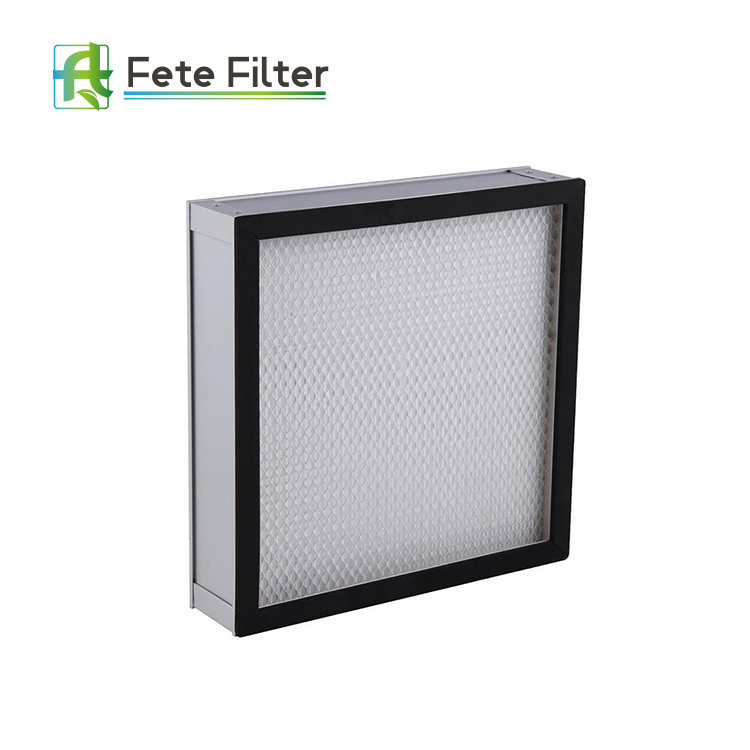If you’ve ever wondered what is a HEPA filter, then this post is for you. Below, we’ll go over every aspect of HEPA filtration, including what does a HEPA filter do, what are HEPA filters made of, and what is a HEPA air purifier. This article will explain everything you need to know about HEPA filters so that you can know exactly how it works and why you should use it.

What is a HEPA Filter?
A HEPA filter is a high efficiency air particulate air filter that can capture ultrafine pollutants. HEPA filters are considered the industry standard for removing dust, pollen, mold, bacteria, particulate matter, and other airborne particles. A HEPA filter is found in air purifiers and forced-air HVAC systems. There are two common standards for HEPA filters: European and U.S. In Europe, HEPA filters must remove 99.95% (ISO) of particles that are 0.3 microns in size. In the U.S., HEPA filters must remove 99.97% of particles that are 0.3 microns in size.
What are HEPA Filters Made of?
HEPA filters are made from either plastic or fiberglass. A HEPA filter is made up of interlaced fibers with a diameter of less than 1 micron that are twisted and turned in different directions to create a fibrous maze. The individual threads of the HEPA filter material are so small that a big portion of the media mat consists of air. The openings inside the mat are generally smaller than 0.5 microns, allowing the HEPA material to collect particles down to 0.3 microns in size
What Does a HEPA Filter Do?
What a HEPA filter does is remove microscopic particles from the air at a high rate of efficiency. HEPA filters do this by trapping particles through direct impaction, sieving, interception, and diffusion. Using HEPA filtration in homes improves indoor air quality by reducing airborne contaminants.
Direct Impaction
Direct impaction occurs when particles collide directly with a HEPA filter fiber and stick to it.
Sieving
Sieving occurs when particles get trapped between two HEPA fibers because the size of the contaminants is larger than the gap between the fibers.
Interception
Interception occurs when particles stick to the sides of HEPA fibers.
Diffusion
Diffusion occurs when microscopic particles bounce around inside the HEPA filter and eventually get caught by the fibers.
What is the Difference Between a HEPA Filter and a Regular Filter?
The difference between a HEPA filter and a regular filter is that HEPA filters are made of thousands of thin fibers rather than solid material. Regular filters are made of porous materials like cotton and polyester. A HEPA filter can capture finer particles than a regular filter. So if you were wondering, what do HEPA filters do compared to other types of air filters, then the answer is clear: HEPA filters are much more efficient than regular filters because they can trap particles in a variety of ways through direct impaction, sieving, interception, and diffusion. Regular filters primarily use direct impaction to collect particulates.
What is a True HEPA Filter?
A True HEPA filter is one that has been certified to capture 99.97% of particles down to 0.3 microns in size. HEPA filters come in various types and True HEPA filters meet a strict standard for air filtration. There are other types of HEPA filters, such as HEPA-type filters, that only have a 99% efficiency rate of capturing particles as small as 2 microns. A True HEPA filter is much better at a 99.97% efficiency rate for particles as small as 0.3 microns.
What is a ULPA Filter?
A ULPA filter or Ultra Low Particulate Air filter has a 99.99% efficiency rate for particles as small as 0.1 microns. ULPA filters were developed for use in hospitals and manufacturing rooms. A ULPA filter is denser than standard HEPA filters, which results in lower airflow and higher power usage for equipment.
To learn about fan filter units, visit our website and stay tuned for future blog posts. Next week we’ll be discussing “How to Apply Fan Filter Units” as part of a larger HVAC system.







